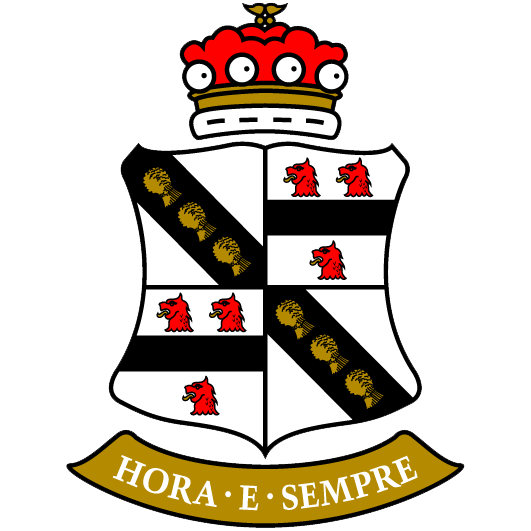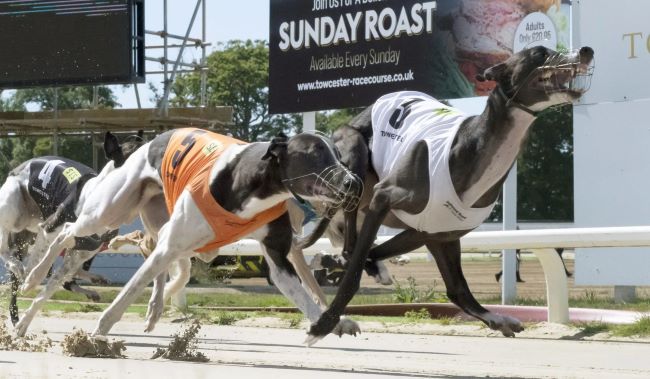Different Greyhounds have unique styles of running, aptly showcased through their pace in a race.
Types of Greyhound Pace
Greyhound pace varies depending on the dog’s running style and stamina, with dogs falling into four primary categories:
- Early Pace: This style is characterized by exceptionally quick sectional times. Dogs with early pace, or ‘fast breakers,’ achieve their peak speeds early in the race. They excel when allowed to dictate the race “on the bunny” from the start and rely on a clear run for an uncatchable lead. However, this burst of speed often leads to the dogs tiring and possibly fading dramatically towards the end of the race.
- Middle Pace: Greyhounds in this category showcase their agility along the back straights in the mid-stages of a race. Despite their acceleration, they often find themselves surrounded by a tightly packed field, making them more susceptible to race interference. These dogs might be forced to check when challenging at the 1st or 3rd bends, risking impedance.
- Finishing Pace: ‘Stayers’ fall into this category, making their mark towards the latter stages of a race. They tend to benefit when there’s trouble among leading dogs. However, ‘finishers’ have to navigate past all dogs ahead of them, often leading to hampering or the need to run wide. Many ‘puppies’ and dogs better suited to longer distances often show signs of a finishing pace, running late in the races, and are eventually moved to compete over longer distances.
- All Round Pace: These greyhounds maintain a ‘strong gallop’ consistently throughout the race, demonstrating steady endurance. However, their performance may occasionally be perceived as one-paced due to the relative lack of speed variation.
Understanding the distinctive characteristics of these pace styles is crucial in appreciating the complexities of greyhound racing performance and in making well-informed predictions about race outcomes.
Identifying a Greyhound’s Pace Type
Identifying a greyhound’s pace type involves understanding the detailed nuances in their racing form-lines. While there are no explicit statistics in racing data to indicate the pace style, hints can be gathered using three primary methods.
1. Studying Sectional Times
Greyhounds’ timing in individual sections of a race often gives an indicator of their pace styles. Observing these timings can help determine whether greyhounds show tendencies toward being fast, average or slow at the start of the race. Comparisons should be made based on timings recorded on the same date and at similar track distances.
For instance:
In Australia, premier stadiums or “city tracks” provide three split times—
- Initial run to the bend: Speed from the start to the first bend
- Approximate midpoint: Pace at the halfway mark
- Coming home or home run: Speed from the top of the back-stretch to the finish line, measured to an accuracy of a thousandth of a second.
2. Interpreting Race Remarks
Race remarks can provide insightful clues about greyhounds’ pace types:
Early Pace indicators: includes comments like (ep), clear 1st, led 1, very quick away (v qaw), fast away (f aw), always led (aled), led to line, and box to wire.
Middle Pace indicators: includes comments like led 1, led 2 to run-in, led 3, and slow away-early pace (sa ep), mid-stretch drive.
Finishing Pace indicators: includes comments like slow away (sa), very slow away (vsa), lacked early pace (lep), led 4, led on line (ld ln), ran on (rn on), finished well (fw), stretch drive, and winning drive. Some dogs with LEP may break quickly from the traps but slow to the bend, and then strongly make up ground towards the end of the race.
All Round Pace indicators: These greyhounds share comments with other pace types. They can win either by leading right from the start or by finishing fast. In most cases, they perform best when maintaining a good early position.
In the context of Irish greyhound race remarks, evenly away (ev aw) signifies a balanced pace throughout the race.
3. Evaluating Race Positions
In the UK, and Ireland, positions at each stage (1st, 2nd, 3rd, 4th bends and finishing line) of previous races can be a reliable indicator of a dog’s pace type. These usually sit next to the sectional times and offer insights into the pace type:
For example:
- Early Pace: can often be interpreted as 1 1 1 1 2
- Middle Pace: may look like 3 2 1 1 2
- Finishing Pace: tends to appear as 6 6 4 3 2
- All Round Pace: typically is 2 2 2 2 2
In the United States, ‘Official Chart Writers’ record greyhounds’ positions at key stages:
- Off Call or Break Call: Captures the dogs’ positions 1-8 as they exit the starting boxes.
- The 1/8 Call: Measures the dogs’ positions as they exit the 1st (escape) turn.
- Stretch Call: Indicates runners’ positions at a point just as they enter the final turn.
- Finish Call: Reflects dogs’ final placements 1-8 at the finish line.
As an additional strategy while at a race meeting, it’s often beneficial to observe the dogs during the parade. Alert dogs, appearing ready to spring forward with their tails tucked underneath, are often more promising than sluggish or overly relaxed dogs with their tails wagging in the air.




